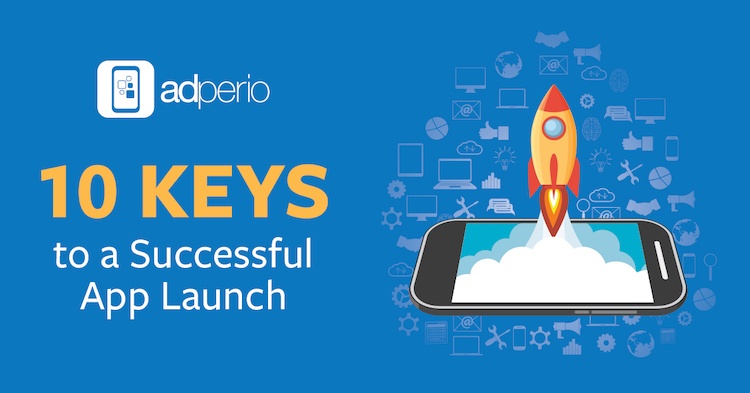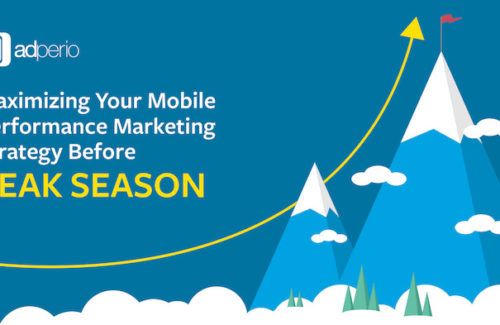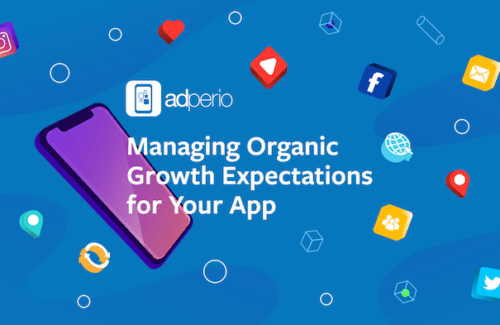Let’s pose a scenario. Your team has just spent the past 6 months developing an app. The idea behind it is innovative, you’ve worked with skilled programmers to make sure it works like a dream, the design is intuitive, and your app monetization strategy has been laid out.
Now, if your launch strategy is simply to get your app into the app store, you’ve done all that work a huge disservice! A successful app launch strategy should extend well beyond simply submitting your application to get it in the app store. In fact, we’d argue it should happen right alongside the development of your app from the beginning.
To help compete against the 2 million apps already on the market, these are 10 of our recommended keys to a successful app launch strategy.
Utilize Market Research
Market research is key in discovering where your target audience is, what demand there is for your product, and insight into how to differentiate yourself from the competition.
More likely than not, your app will have competitors that accomplish roughly the same objective as you. A competitive analysis will let you know exactly who you’re up against, what’s currently working, and what areas the competition is missing or doing poorly that you can capitalize on.
Consider asking questions like these: How popular are your competitor’s apps in the app stores? What are reviewers saying they like about the competing apps? What are their complaints? What’s the core reason behind downloading these apps? Is there a gap in the market that your app can fulfill?
Download competitor’s apps, read the app store reviews, look online for pieces written about the competition. It’s crucial in the saturated app marketplace that your app brings something unique to the table, and these answers can be found through thorough market research starting at the very beginning of your app development.
Analyze Buyer Personas
A defined target audience is crucial to know for your app launch strategy – as who, but the buyer, is more important to the success of your app? Your buyer personas are “imaginary” customers that are created to aid in your target audience research and analysis. They should be at the center of the entire design and purpose of your app, so it’s critical to make sure the personas are well-defined in the early stages of your app development.
When you have a vision of the groups you’re launching your app for, it becomes much easier to make user-focused decisions. Buyer personas are a way for the team to stay focused and on the same page for both development, and marketing purposes.
Say for example, your ideal consumers use Instagram over any other social platform. Now you know exactly where to market your app!
Set Up In-App Analytics
Once your app is out in the marketplace, we recommend utilizing in-app analytics to enhance the user experience and hone your marketing strategy. They key here though is not to wait until after your app launches to figure this process out.
In creating your app-analytics strategy, ask yourself what metrics will be the most useful for your business model. Some common aspects measured are: how many users download your app, number of active users, what features are used most often and which are the least, and which channel generates your most valuable users.
Fortunately, there are a number of tools on the marketplace that can help you track and analyze these in-app metrics. Research from the start of your app launch plan which tools will best benefit your app.
Develop a Marketing Plan
The most successful apps are often promoted well before their launch date. Once you’ve done your market research, created your buyer personas, and have nailed down the core features of your app, you’re at a point where your marketing plan can begin to be shaped.
Some important components of your marketing plan include things like your app name, the keywords you use to advertise your app, creating preview videos or stills of your app, and setting up a press kit.
In the beginning, your marketing efforts will likely build slowly – ultimately culminating in a peak of interest on your app launch date. But don’t be discouraged, keep consistently posting to your chosen channels before your launch. Reach out to peers, industry connections, and potential customers to muster some early support – and solicit their feedback! You’ll be thankful to have all this material to back your app once it launches.
Create a Website or Landing Page
Without your app available to the public yet, you’ll need to establish a central hub to house all information on the app itself and its impending launch date. This central location can be a simple landing page, or a series of landing pages/website pages for each marketing initiative you implement for your app. Make sure your webpage includes clear screenshots or videos of your app, a list of its features, a call to action, and a way to collect potential user emails in order to offer them promotions or information on your launch.
Set a Launch Date
Our advice for setting your launch date? Be reasonable with your timeline, and keep a detailed checklist. There are many moving parts in creating an app, so be sure you have enough time for everyone involved to complete their parts, and to allow for sufficient time to create buzz around your app.
Also, keep an eye out for impending release dates from other companies in the mobile app community. Last thing you want is to release your app right when a competing app is already making headlines.
Take Advantage of Social Media
Here’s where your buyer personas come into play again – what social platforms are your ideal customers frequenting the most? Choose one or two social channels and set up your pages well ahead of your launch. It’s much better to manage a few channels well with a regular posting schedule than trying to spread yourself too thin over many.
Use your social channels to reach out and engage with your target audience, build interest with peeks at your app’s features, answer questions, and direct users to your webpage or landing pages. You can also consider integrating social media into your app so that once your app has launched, users can share and promote your app with just the click of a button.
Conduct Beta Testing
Beta testing is where your app gets real-world experience with legitimate users. This is the time where you test for bugs, see how users will actually interact with your app, and figure out what obstacles users are experiencing. We advise using unbiased testers who are thorough in their reviews….this is not the time to employ only close friends or family!
Have a Prepared Support System
While a support system for an un-launched app may seem like overkill, we assure you, it’s not. Inevitably, there will be hiccups with your app at some point – it’s the nature of digital technology. If you can handle these blips quickly and with grace, your users will sing your praises by way of review, word of mouth, and likely keep your app around longer because of it.
Another great support feature to prepare is an FAQ section within your app or on your website. Use your beta testing period to collect common questions and have the answers ready and published at launch.
Make App-Store Optimizations
Just like SEO (Search Engine Optimization) is key for your online presence, app-store optimizations, or ASO, are essential in setting up your app to have the potential to become more discoverable in the app store. While relying on purely organic growth may not be as feasible as it once was, a well optimized app will certainly never hurt your growth potential.
Look into the search terms competing apps are using, as well as keywords your target audience are using, and utilize them in your app descriptions. Even your app icon can be optimized to give potential users a better idea of what to expect in your app.
Launching your app is only the beginning of your entire app journey – but if planned well and executed with precision, your app-launch strategy will set you up for success.













